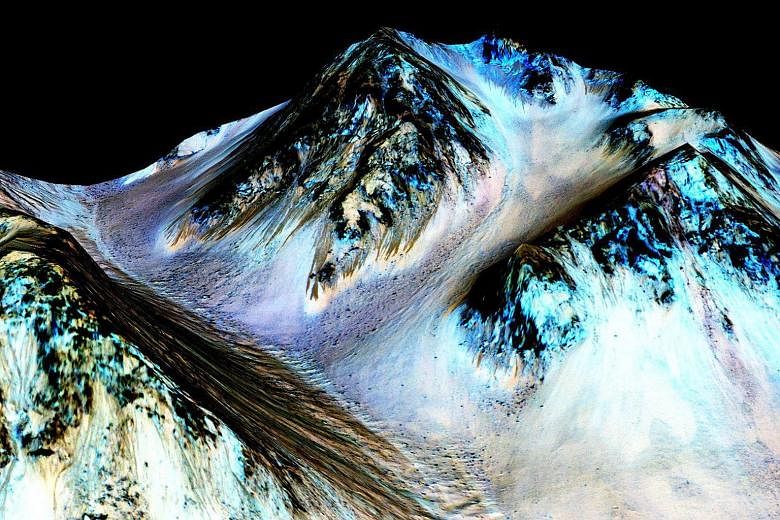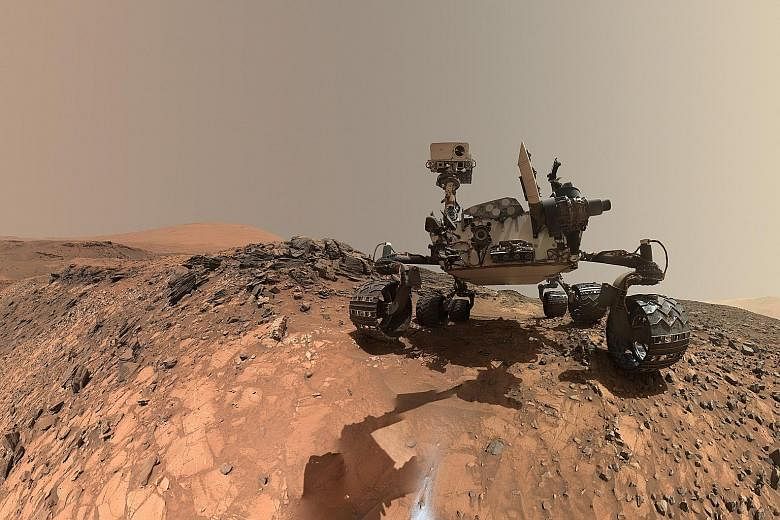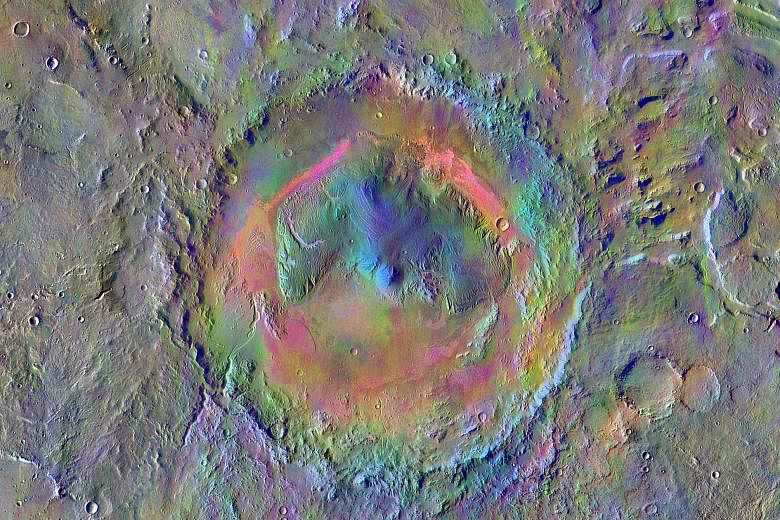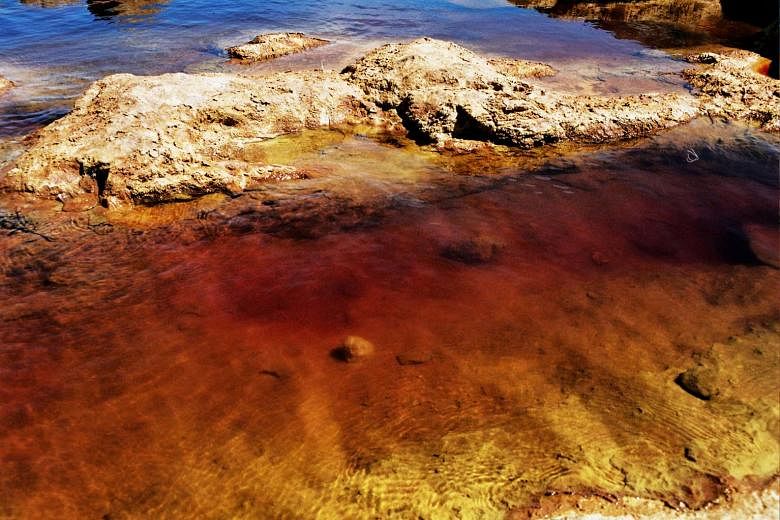The movie The Martian may have made living on Mars seem plausible, but scientists say colonising the Red Planet remains the stuff of science fiction. With last week's discovery of liquid water on the planet, however, mankind has come the closest it has ever been to uncovering extraterrestrial life.
The finding has also unearthed a fresh set of problems.
Last week, the US National Aeronautics and Space Administration (Nasa) announced that its researchers had found the strongest evidence so far that liquid water flows intermittently on present-day Mars, a discovery hailed as a breakthrough by its Mars missions.
Nasa said its spacecraft, the Mars Reconnaissance Orbiter, had found "mysterious streaks" on the Red Planet, which gets its signature colour from iron oxide in its soil.
While the source of the water that caused the streaks is not known, the darkish streaks themselves "appear to ebb and flow over time", which "darken and appear to flow down steep slopes during warm seasons, and then fade in cooler seasons", Nasa said in a statement.
Researchers from the United States and France say they have found evidence in the lines of "hydrated" salt minerals, which require water for their creation. These results "strongly support the hypothesis" of liquid water on Mars today, they conclude.
Nasa's rovers also found a lot more humidity in the air than expected.
Without water, life as we understand it would be impossible, scientists say.
Professor of Science (physical science, astronomy) at Yale-NUS College Charles Bailyn told The Straits Times it is generally assumed that life forms and thrives best in the presence of liquid water.
"The fluid nature and chemical properties of water allow for the creation of the kinds of very complex molecules and structures required for life," he said.
Although Mars had rivers, lakes and maybe even an ocean a few billion years ago, its modern moisture is modest - small patches of damp soil, not pools of standing water.
But as Dr Jim Green, Nasa's director of planetary science, told reporters: "If you look at Earth, water is an essential ingredient. Wherever we find water, we find life."
Still, other researchers point out that for the water to remain liquid at the sub-freezing temperatures of the planet, it had to be very salty, possibly too salty to support any life, although life forms on Earth have been discovered which thrive in equally extreme conditions such as boiling or highly acidic water.
There are concerns, however, that the search for life on Mars could end up contaminating the celestial planet .
Nasa has said that Curiosity, the multibillion-dollar robot sent to search for life on Mars, must ironically stay away from promising "hot spots" for fear of spreading microbes from Earth.
"Curiosity isn't designed to go to a place that can currently support microbial life," Dr Michael Meyer, a scientist for Nasa's Mars Exploration Program, told Agence France- Presse. "For that we need a higher level of cleanliness, which is more complicated and costly to achieve."
Senior lecturer Cindy Ng at National University of Singapore (physics department, science faculty) said: "There has not been any human mission to Mars, but any mission (human or unmanned) does risk contaminating the planet."
Asked if it would be possible for humans to live on Mars, she said: "I think it is possible. There are many challenges that have yet to be overcome, but we shall look forward to what science can achieve in the far future.
"Throughout history, science has made many things possible."
Astronaut John Grunsfeld, an associate administrator of Nasa's science mission directorate, said water would make it easier to send a manned mission to Mars. "To be able to live on the surface, the resources are there," he told AFP.
This will not be any time soon, however. As Prof Bailyn pointed out: "It's really a very inhospitable place - much worse than even the most remote corners of the Earth, like the South Pole or the peak of Mount Everest or the bottom of the deep ocean."
The average temperature on Mars is about minus 62 deg C and, while it has clouds and wind just like Earth, its surface is rocky and covered in canyons, volcanoes and craters.
Its atmosphere contains more than 95 per cent carbon dioxide and less than 1 per cent oxygen.
If people do one day live on Mars, could anyone own a piece of Martian property?
While the idea of buying planets has been thrown up, it is banned under the United Nations' Outer Space Treaty which came into effect in the 1960s.
The treaty, which provides the basic framework on international space law, states that while outer space shall be free for exploration and use by all, it is not subject to "national appropriation by claim of sovereignty, by means of use or occupation, or by any other means".
The treaty has been signed by most countries, including Singapore.
"I suspect it would be hard to establish property rights, since no government could claim jurisdiction," said Prof Bailyn.
Fun facts on Mars

Q Can we drink the water on Mars?
A Yes, we might be able to, but it would probably be very salty, as it is the salts in the water that allow it to remain liquid in the planet's sub-freezing temperatures.
What is more important now is to find out the source of the liquid water, which remains a mystery.

Q What would it be like to live on Mars?
A It would be very hot, and very, very cold.
The average temperature on Mars is minus 62 deg C but the temperature can plummet to minus 140 deg C - far frostier than the coldest place on Earth - and soar to 58 deg C.
But you would feel lighter.
On Mars, you would experience 62.5 per cent less gravity, compared to Earth. This means that if you weigh 100kg on Earth, you would weigh only about 38kg on Mars. The years would also drag on - Mars has approximately 687 Earth days each year.
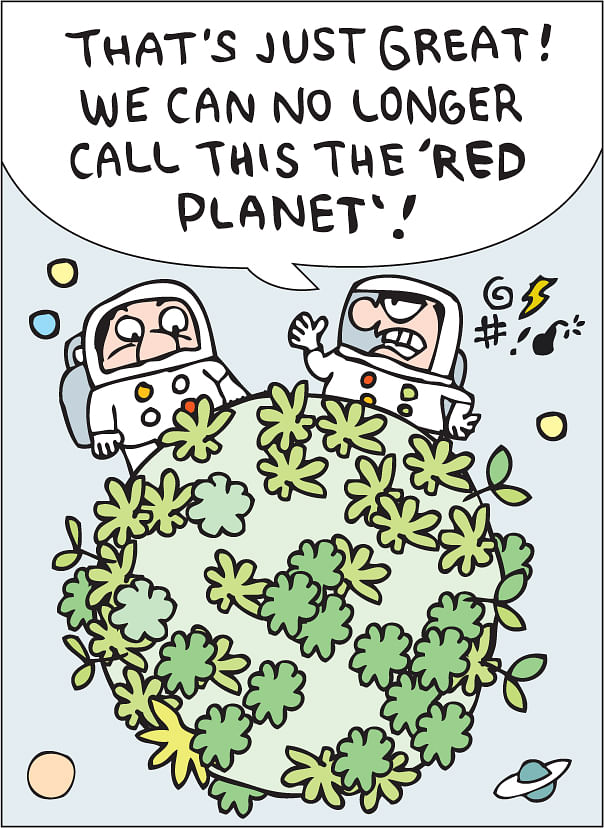
Q Can we grow food on Mars?
A This is a possibility that scientists are already exploring.
Soil on the planet contains the nutrients needed for plants to grow. These nutrients include magnesium, sodium, potassium and chlorine.
While there have been a few proposals to grow plants on Mars, none has become a confirmed project.
The goal is to supply food to humans who will live on Mars in the distant future, to solve the problem of having to transport food supplies from Earth.

Q How long would it take to travel to Mars?
A About nine months, travelling on a rocket. The Moon - the only celestial object that man has set foot on - is 384,400km from Earth. Mars is 200 times farther away.
Carolyn Khew
• Source credit: Nasa, Dr Cindy Ng, Senior Lecturer, Department of Physics, National University of Singapore; Dr Charles Bailyn, Professor of Science (Physical Science, Astronomy), Yale-NUS College.
